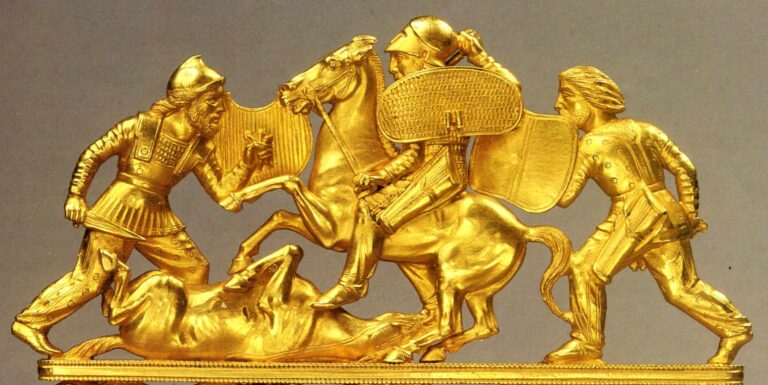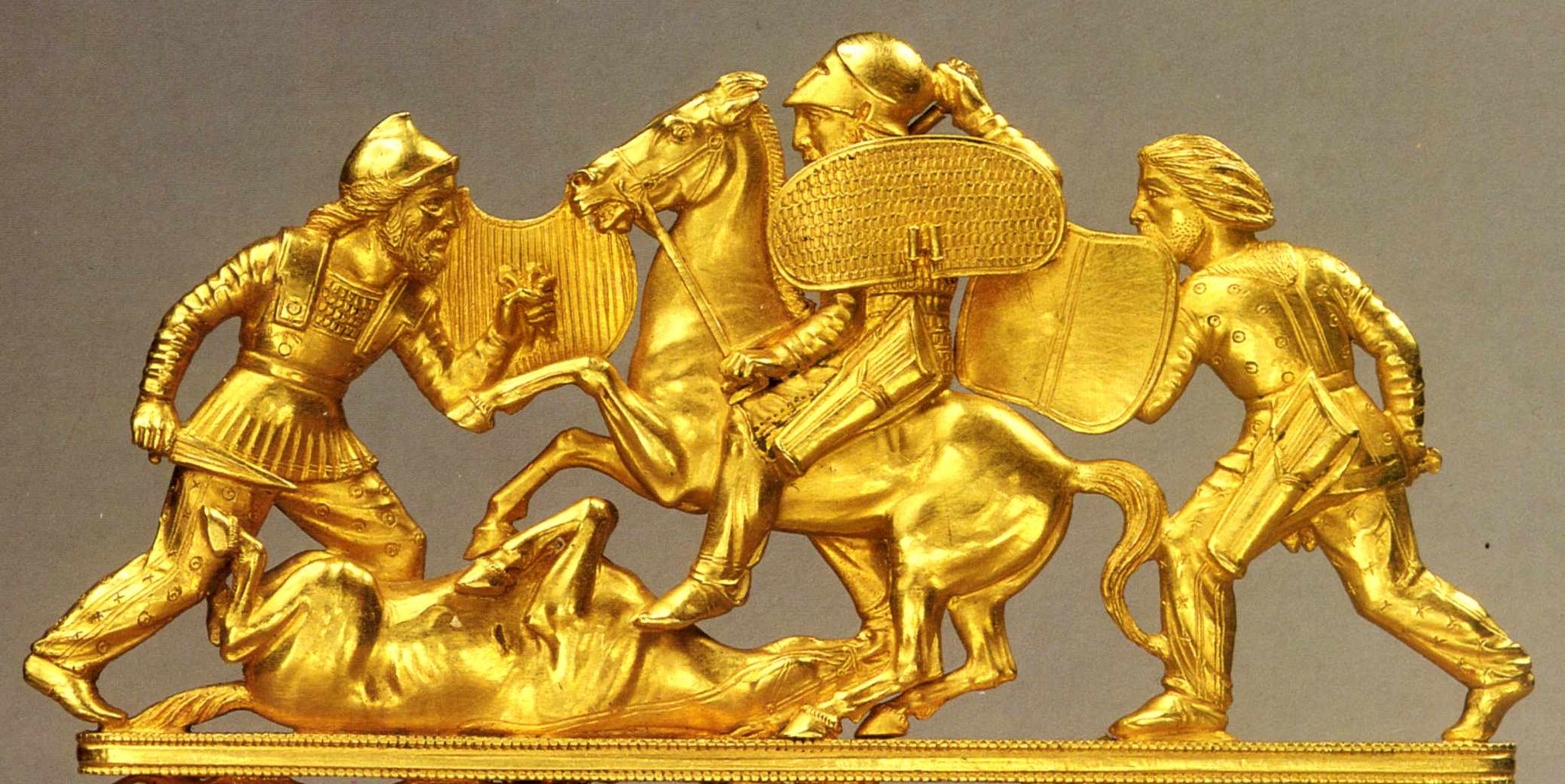
[ad_1]

About 3,000 years ago, the ancient Scythians were a force to be reckoned with. Beginning with their emergence from Iran around 900 B.C. until the peak of their power, during the 4th century B.C., the nomadic tribes who all shared aspects of Scythian culture were spread across Eurasia.
Their territory once stretched more than a million square miles, from the edges of China and India to eastern Europe, beyond the Black Sea. In this domain, more than two dozen tribes thrived, including such groups as the Pontic Scythians, Royal Scyths, Saka, Massagetai and others.
The Scythian People
The Scythian people are known for their nomadic lifestyle and rich culture. They needed lots of room to roam, for these people weren’t just nomads, but nomads on horseback. A common trait among Scythian tribes was their skill at breeding horses for transport, especially combat.
Their ability to attack an opponent with alarming speed — and to just as quickly disappear into their vast lands when pursued — made them a terror to confront, and nearly impossible to pin down and defeat.
In addition to their skill in battle, many Scythian groups were extremely wealthy. Researchers have found burial sites of the ruling elite filled with large numbers of gold artifacts, fine garments and weapons, and dozens of horses, sacrificed to join their masters in the afterlife.
Scythian gold comb depicting a battle, 430-390 B.C. (Public domain/Wikimedia Commons)
What happened to them? The same thing that happened to other ancient cultures throughout history.
The Scythian Empire
So, they had power, wealth and control over a significant swath of the known world. Yet by 200 B.C., Scythians were already being supplanted as the dominant culture in their lands. From then until about A.D. 300, the Scythians continued to dwindle in power and influence until they occupied a relatively small region, having largely abandoned the nomadic lifestyle that had defined them for so long.
Over time, other groups arose and encroached on their lands — or became more adept at preventing the Scythians from encroaching on theirs. Despite their fearsome reputation, it gradually became clear that the horse-lords weren’t invincible; they began to find themselves on the losing end of major conflicts. In 339 B.C., for example, Scythians under King Ateas, tried to cross the Danube River and were met by the Macedonian forces of King Philip II.
Beating the Unbeatable
Philip utterly defeated his opponent, killing Ateas and enslaving tens of thousands of captives. Ten years later, the Saka, a Scythian tribe from the Asian steppes, lost a significant engagement to another Macedonian army at the Battle of Jaxartes. There, Philip’s son — you would know him as Alexander the Great — actually succeeded in cornering the famously elusive nomads, killing their leader and securing his borders.
Read More: Amazon Warrior Women of Ancient Scythia
When it comes to the collapse of ancient civilizations, warfare and economic decline are usually two of the bigger contributors. Losing battles means losing people, territory, resources and influence. In 310 B.C., the Scythians were defeated by another group of nomadic tribes, the Sarmatians, largely reducing their domain to Crimea. Over the next few hundred years, their decline would continue.
Who are the Scythians Today?
Scythian exhibit at Esik Museum, Kazakhstan. (Credit: Cholpan/Shutterstock)
Whether by conquest or other means, ancient Scythian tribes were assimilated, merging over time into different tribes and ethnic groups. Here are just few cultures, ancient and modern, that claim Scythian heritage — sometimes even when the evidence of that heritage is decidedly scant, or a product of outright wishful thinking.
Ossetians
The Ossetian people of the Caucasus Mountains, situated between Russia and Georgia, are sometimes called modern Scythians and hailed as the closest living relatives to ancient Scythian tribes. However, it’s also claimed that they are descended from Sarmatians or Alans, which were similar ethnic groups. In addition to Russian, these people also speak Ossetic, an eastern Iranian language that some consider to be a remnant of the original Scythian language groups.
Huns and Goths
The so-called barbarian tribes that so vexed the Roman Empire in its later days have sometimes been linked with ancient Scythians. The Goths, however, were a Germanic tribe, with no real connection to these Eurasian horse people. The Huns, however, shared many cultural traits with Scythians. Certainly, both were nomadic groups, skilled horsemen and fierce warriors, but the Huns emerged from central Asia separately. By the 3rd century A.D., surviving Scythian tribes were enveloped by the Huns, Goths and others. Eventually, the word “Scythian” would become something of a generic term for barbarian warriors.
Russian commemorative stamp of a 19th century painting depicting a Scythian battle scene. (Credit: Stamps.ru/Public domain/Wikimedia Commons)
Russians
A significant number of eastern European people — particularly Russians, Ukrainians, Hungarians and others — like to say that they are descended from Scythians and jealously covet their ancient gold and other artifacts. And why not? Who wouldn’t want to claim kinship with a bad-ass clan of warriors who liked to drink the blood of an enemy from a cup made from the skull of that enemy?
This may explain why popular depictions in that part of the world include everything from stamps to bloody action films that feature Scythians as the main characters. But the fact is, most Russians and Ukrainians are descended from the Slavs. Hungarians are mostly descended from Magyar settlers, although various Hungarian ethnic groups do claim ancestry with Turks, Huns and, yes, Scythians. Then again, even the Scots and the Irish want to claim Scythian descent.
If you really want to split hairs, Scythian tribes were spread across such a wide territory over such a long period of time, it’s entirely possible that many modern people across Asia and Europe may well have genetic traits that could go all the way back to the once-mighty horse warriors of the steppes. So maybe the Scythians haven’t really vanished after all.
Read More: Who Were the Ancient Scythians?
[ad_2]